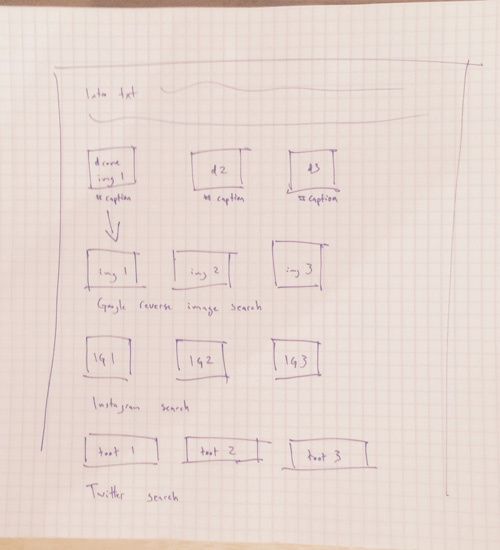ICM Week 10 - Documentation
04 Nov 2015
courses, documentation, icm
My ICM final project will examine how different groups represent and make meaning of complex and contested topics ideas brought about by changes in technology. How do we normalize/validate/legitimize them? How do we challenge them?
The inspiration for this project came from Telewar, a quasi white paper by Roel Roscam Abbing and The Force Of Freedom collective. Telewar "is the convergence of warfare and the technologies of the mass media." Abbing examined the use of drones and how they were represented by various military units on social media. I was intrigued by the notion that social media was conflated with mass media. One of the benefits repeatedly heard of social media is its ability to democratize expression - anyone and everyone has a voice on the internet!
We know governments have been using various mediums throughout history for propoganda purposes, but what does mean for our current media landscape? One of the implicit themes in Abbing’s paper is how new methods of warfare (e.g. use of drones) are represented in social media. An interested question that was not explored in depth is, how do units of authority use social media to create a narrative that normalizes and legitimizes these changes? And, since we all have social media accounts, how do we respond to these messages? Do we reinforce them and give them meaning and power? Do we reject them and create new messages?
My project will begin with drones, although I’d like to expand it to allow users to enter any image or text they choose as a way to explore a topic of their choice. At the top of the page, there will be 3 images that I select - along with the text caption and hashtags - of drone warfare chosen from different social media accounts of military organizations. These represent the “telewar” narrative as handed down to us. The user will select one of the three images and then below a set of API calls will be returned that show how the substance of the image is represented in other place on the internet.

For example, the image will be put into reverse image search in google, and the top 3 resulting images will be returned. Maybe it will be the same image reproduced on different sites. Maybe an image of a crew standing in front of a drone in the desert will return an image of a different crew standing in front of a different drone in a different desert (a motif!). Maybe someone will have made a meme of it.
The text caption of the image will be run through the Twitter and Instagram API, and the top 3 images will be returned. Same with hashtags.
- Email: coblezc@gmail.com
Twitter: @coblezc - CC-BY